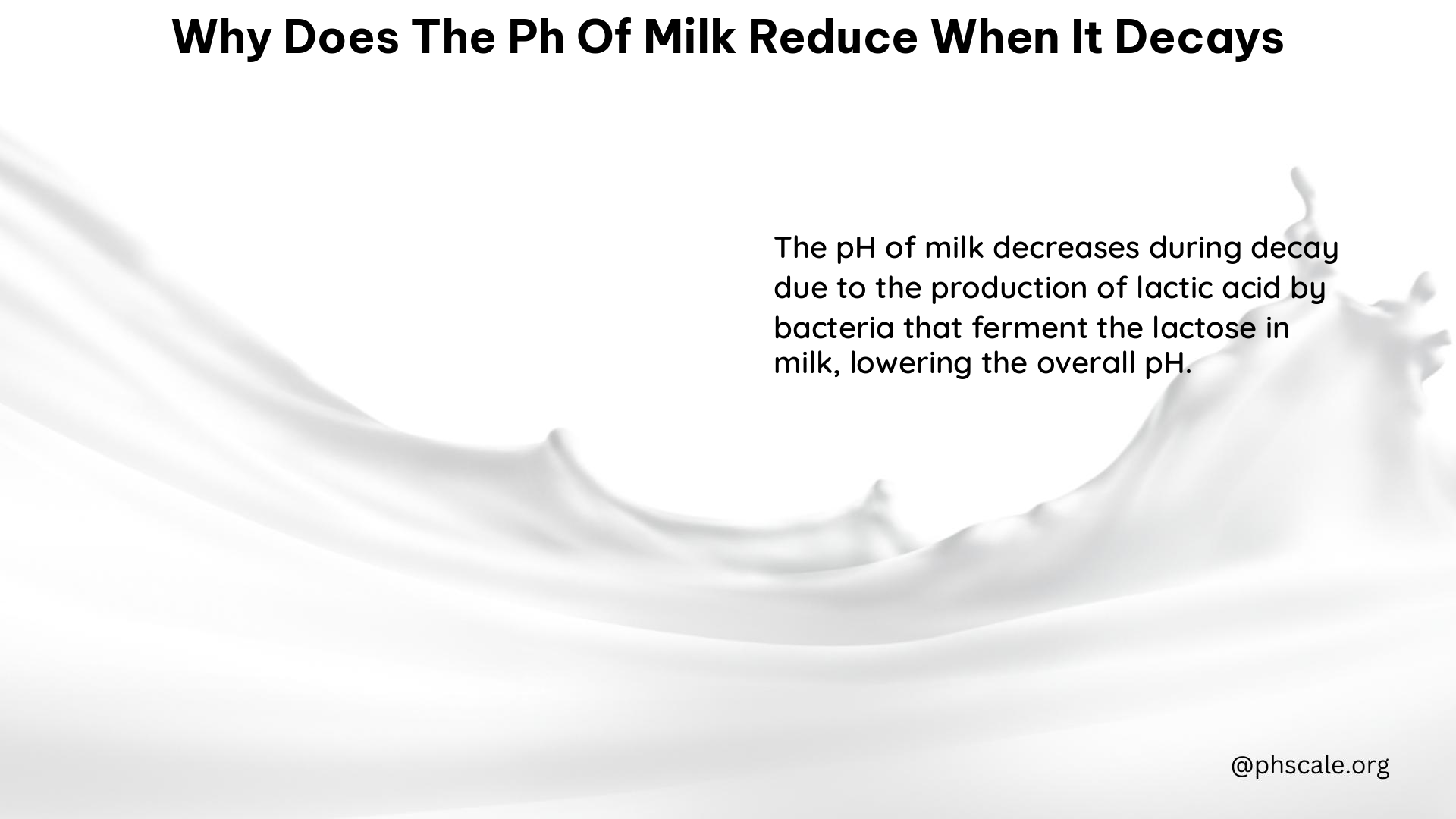The pH of milk reduces when it decays due to the anaerobic respiration of bacteria present in the milk. These bacteria convert lactose sugar into lactic acid, which is a more acidic compound. This process increases the acidity of the milk, thereby lowering its pH.
Initial pH of Milk
The pH of fresh milk is typically around 6.5, which is slightly acidic. This slightly acidic nature of milk is due to the presence of various compounds, including casein proteins, carbon dioxide, and phosphates.
Decay Process

As milk decays, bacteria such as lactic acid bacteria break down lactose into lactic acid. This process is known as anaerobic respiration, as it occurs in the absence of oxygen. The production of lactic acid increases the acidity of the milk, resulting in a decrease in its pH.
Temperature Influence
The rate of milk decay is influenced by temperature. Higher temperatures accelerate the decay process, leading to a faster reduction in pH. For example, milk incubated at 35°C decays more rapidly than milk at 20°C or 5°C. This is because the higher temperature provides an optimal environment for the growth and activity of the lactic acid bacteria.
pH Changes Over Time
The pH of milk decreases over time as it decays. The rate of this decrease is temperature-dependent, with higher temperatures resulting in faster pH reduction. As the lactic acid bacteria continue to convert lactose into lactic acid, the acidity of the milk increases, and the pH drops.
Contaminants and Chemicals
Lactic Acid Bacteria
Lactic acid bacteria are naturally present in milk and are responsible for the conversion of lactose into lactic acid, leading to the reduction in pH.
Lactose
Lactose is the sugar present in milk that is broken down into lactic acid during the decay process.
Lactic Acid
Lactic acid is the acidic compound produced from the breakdown of lactose, which increases the acidity of the milk and reduces its pH.
Balancing pH and Home Remedies
Refrigeration
Storing milk at lower temperatures (e.g., 5°C) slows down the decay process, helping to maintain a higher pH for a longer period.
Pasteurization
Heat treatment can kill bacteria and extend the shelf life of milk, thereby maintaining a higher pH.
Acidity Regulation
Adding alkaline substances like baking soda can help balance the pH of milk, but this method is not recommended for consumption as it may affect the milk’s nutritional properties and taste.
Helpful pH Quantity to Consume
Fresh Milk
The pH of fresh milk is around 6.5, which is suitable for consumption.
Sour Milk
Milk with a pH below 4.8 is considered sour and may not be suitable for consumption due to the high acidity.
History
Traditional Preservation
Before refrigeration, people used various methods like boiling, fermenting, or adding preservatives to extend the shelf life of milk and maintain its pH.
References:
- Quora. (2020). Why does the pH of milk kept at room temperature become lower? Retrieved from https://www.quora.com/Why-does-the-pH-of-milk-kept-at-room-temperature-become-lower
- BBC Bitesize. (n.d.). The decay of milk – How are levels maintained within an ecosystem? Retrieved from https://www.bbc.co.uk/bitesize/guides/zydg7p3/revision/7
- Studocu. (n.d.). 0 4 5 Milk contains lipids The lipids are broken down when the milk decays. Explain why the pH. Retrieved from https://www.studocu.com/en-gb/messages/question/5652896/0-4-5-milk-contains-lipids-the-lipids-are-broken-down-when-the-milk-decays-explain-why-the-ph.
